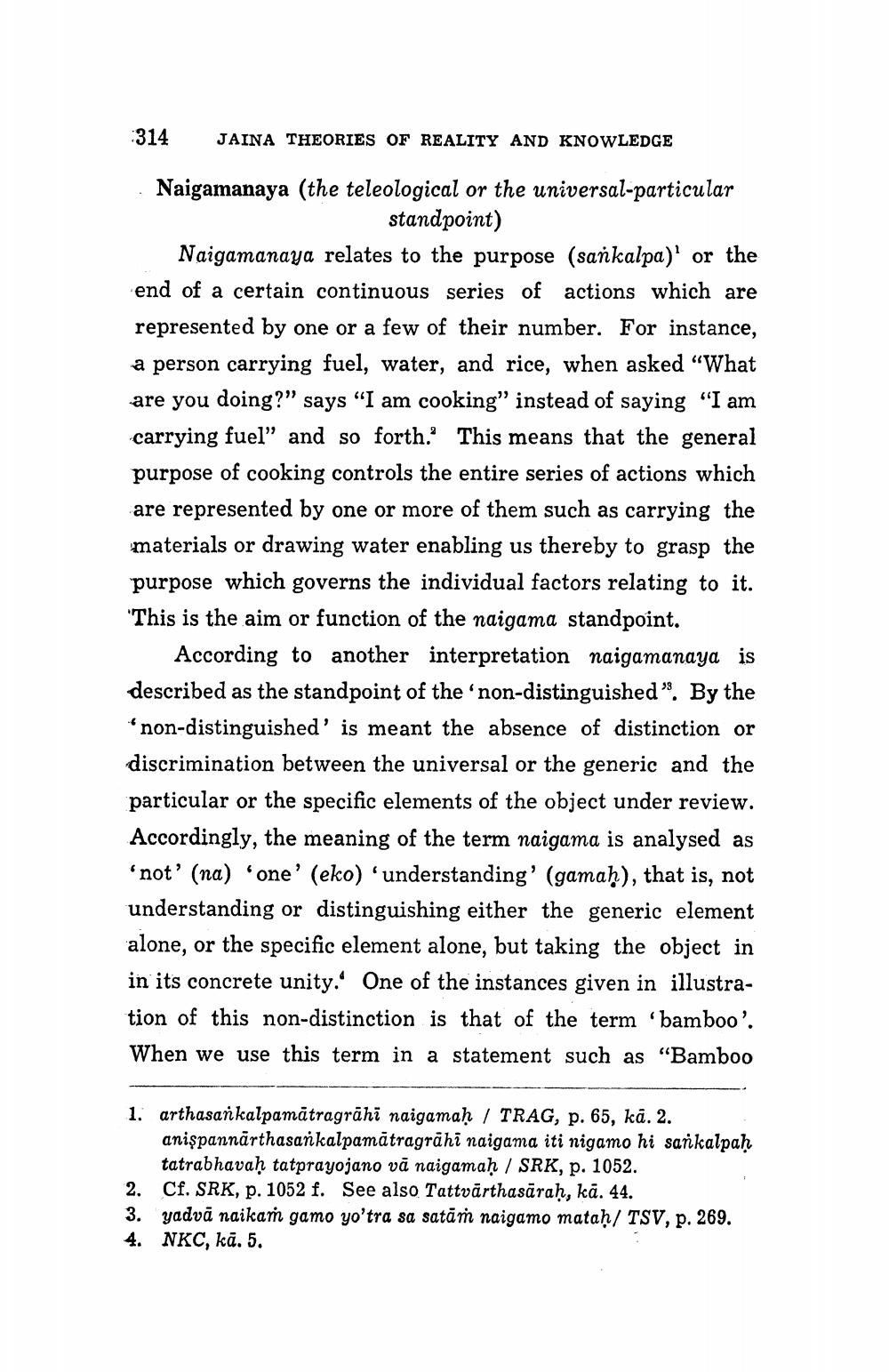________________
314
JAINA THEORIES OF REALITY AND KNOWLEDGE
Naigamanaya (the teleological or the universal-particular
standpoint) Naigamanaya relates to the purpose (sankalpa)' or the end of a certain continuous series of actions which are represented by one or a few of their number. For instance, a person carrying fuel, water, and rice, when asked “What are you doing?” says "I am cooking" instead of saying "I am carrying fuel" and so forth. This means that the general purpose of cooking controls the entire series of actions which are represented by one or more of them such as carrying the materials or drawing water enabling us thereby to grasp the purpose which governs the individual factors relating to it. "This is the aim or function of the naigama standpoint.
According to another interpretation naigamanaya is described as the standpoint of the non-distinguished". By the
non-distinguished' is meant the absence of distinction or discrimination between the universal or the generic and the particular or the specific elements of the object under review. Accordingly, the meaning of the term naigama is analysed as 'not' (na) 'one' (eko) 'understanding' (gamaḥ), that is, not understanding or distinguishing either the generic element alone, or the specific element alone, but taking the object in in its concrete unity. One of the instances given in illustration of this non-distinction is that of the term 'bamboo'. When we use this term in a statement such as "Bamboo
1. arthasankalpamätragrāhi naigamaḥ / TRAG, p. 65, kā. 2.
anişpannārthasankalpamātragrāhi naigama iti nigamo hi sankalpah
tatrabhavaḥ tatprayojano vā naigamaḥ / SRK, p. 1052. 2. Cf. SRK, p. 1052 f. See also Tattvārthasāraḥ, kā. 44. 3. yadvā naikaṁ gamo yo'tra sa satāṁ naigamo mataḥ/ TSV, p. 269. 4. NKC, kā. 5.




